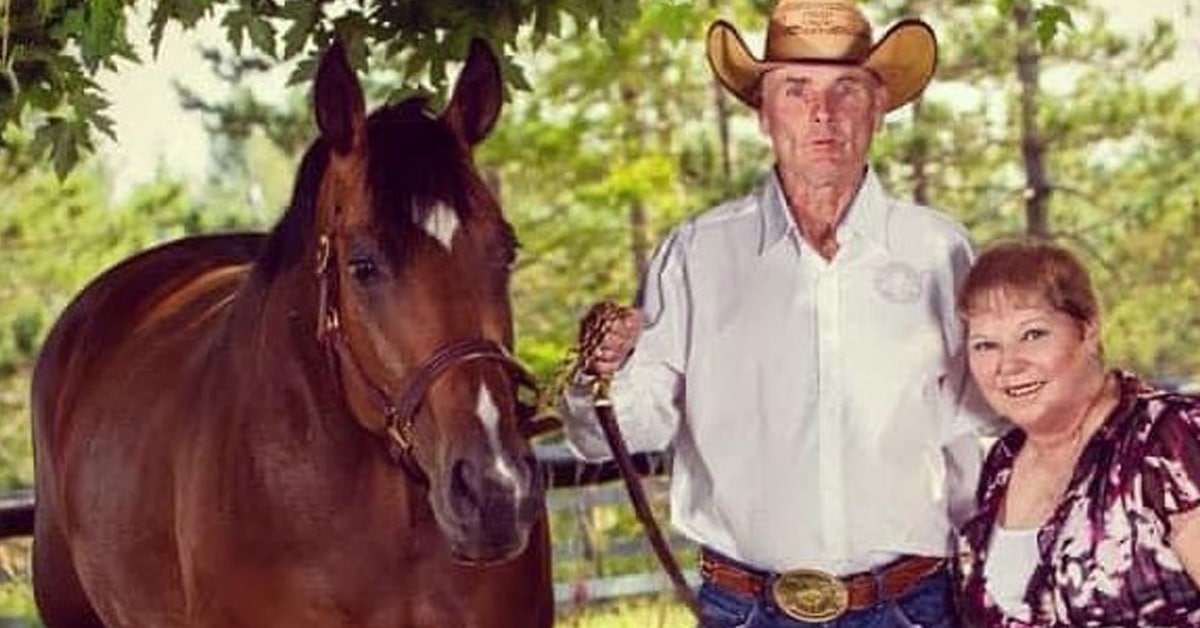Kim Rose was understandably disturbed when she began noticing intermittent “clunking” noises coming from her horse Pepino Julio’s head.
Two years earlier, in spring of 2016, Rose had purchased the Trakehner/Thoroughbred as a coming three-year-old hunter prospect. He was athletic, happy and obedient under saddle, but occasionally something would unpredictably trigger Julio while lunging. A long-time trainer and coach, his owner didn’t believe it was simply a case of young horse freshness.
“He was explosive,” recalls Rose of Delta, BC. “Not just bucking like, ‘Oh, I feel good.’ It was angry, belly-to-the-ground bolting.”

Unusual behaviour and a tell-tale clunking sound were Kim’s first clues that something was amiss.
That summer of 2018, Rose continued to lightly work Julio. But the clunking sound was happening more consistently and frequently. He had trouble eating hay, often stuck out his tongue and sometimes would rear seemingly out of discomfort. In September she stopped riding Julio, concerned for his well-being and her own safety should he have an episode while she was aboard.
An equine massage therapist noted tension in the temporomandibular joints (TMJ), located on either side of the jaw. Subsequently, when veterinary radiographs and ultrasound revealed a mineral “fragment” or chip on the right TMJ, Julio was scheduled for arthroscopic surgery to remove the chip.
Days before the procedure, Rose discovered a thesis paper online called Osteoarthritis of the Equine TMJ.
“It described everything about my horse,” says Rose. She contacted the author, Dr. Travis Smyth who helped her understand more about the TMJ in the days ahead of Julio’s procedure, which took place on October 16. Unfortunately, the operating veterinarian was unable to find the chip. The treatment summary noted: “It is possible that the fragment is present, however, in a surgically inaccessible location.”
By December, Julio’s symptoms had worsened, so Rose contacted Smyth again. He connected her with his graduate research supervisor, Dr. James Carmalt, a professor at the University of Saskatchewan’s Western College of Veterinary (WCVM) Medicine. One of his research specialties is TMJ disease (TMD).

The fibrocartilage in the temporomandibular joints can with withstand a lot of wear caused by rotation of the mandible, but problems in that region are still fairly common. (©Andrey Burmakin – stock.adobe.com)
The Function of the TMJ
Carmalt explains the TMJ is a highly specialized joint that “allows rotation of the mandible [jaw] and the interconnection between the chewing surfaces of the teeth and the rest of the head.” Most of the horse’s joints are covered by hyaline cartilage, which, when damaged, repairs itself by developing fibrocartilage, which he says is “not sustainable.” The TMJ, on the other hand, is solely lined with fibrocartilage.
Because horses chew in a figure-eight motion, the TMJ must rotate in multiple directions. Fibrocartilage is “much longer wearing, more resistant to shearing type force that are present in the TMJ,” Carmalt notes. “The theory postulated by myself and others, is this is an evolutionary advantage. If you are heavily lame, you can run away from a sabre-tooth tiger, but if you can’t graze and are skeletally thin and so weak because your TMJ is damaged, you’ll get gobbled up for sure.”
TMD symptoms are “pretty much anything,” from head tossing, bit issues, undetermined lameness or other pain and explosive reactions similar to what Julio displayed, says Carmalt. “It’s really, really nebulous, massively difficult to actually nail down.” He believes TMD could be complicit in many conditions, but it’s unclear what proportion are intra-articular – occurring within the TMJ itself – or manifestations of physical problems stemming from other areas of the body, as they can present similarly.
Degenerative changes in the TMJ are reasonably common. A study he undertook examined the heads of 1,000 horses who were already undergoing CT scans for sinus, neck or tooth problems. Of those, 36 per cent had changes (i.e. characteristic of osteoarthritis) within their TMJ. “The question is, are those clinically relevant? I don’t know. Because the horse is a prey animal, it will look you straight in the eye on three legs with blood pumping out of it and say, ‘No take that one, the weak one.’”
By the time Rose reached out to Carmalt in December 2018 she had decided Julio would never be a sale horse because of his issues and felt his case could forward the researcher’s investigations. Julio was shipped to WCVM in early January. Here, computed-tomography (CT) scans showed TMD on both sides. After lameness exams and many other procedures, it was determined Julio suffered from performance-limiting, bilateral TMD and would undergo arthroscopic surgery.
Amazing Recovery
For months, Carmalt and team worked to perfect their technique on cadavers. On June 12, they operated, with Rose watching by Carmalt’s side, as he successfully debrided the cysts on both joints. Six days later, Julio was transported home to British Columbia.
Rose re-started him under saddle on August 1 and since then he’s been “amazing.” He received modified Pro-Stride injections to both TMJs just after his return home and is scheduled for another annual dose next week. This biological therapy uses the horse’s own blood to provide anti-inflammatory effects and pain control.

Happier times again.
And, although work is somewhat interrupted due to Covid-19, Carmalt has begun examining whether newer biological therapies such as Pro-Stride, including IRAP and PRP, work as well with TMJ cartilage as steroids do. Another project will examine the effect of TMJ inflammation on equine kinematics (movement). “If it works, then it will blow the roof off the whole thing,” says Carmalt, who continues to seek other potential TMD cases. Follow his Facebook page “Equine TMJ Disease” for more.
The Latest









